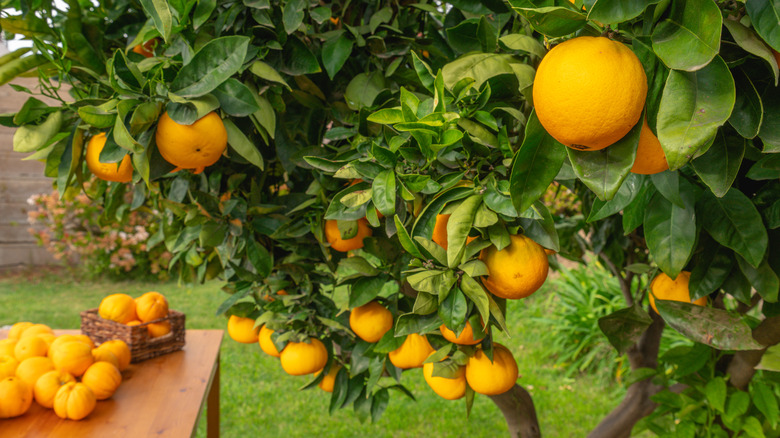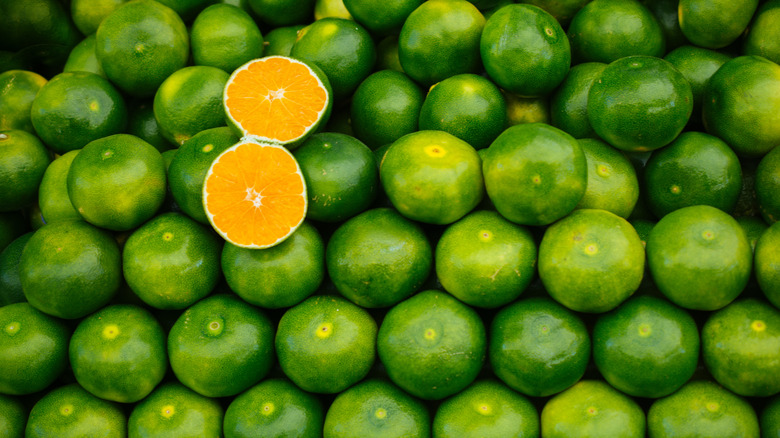Why You Probably Shouldn't Purchase Unripe Oranges
Known for their vibrant orange hues, sweet and citrusy flavors, and plenty of health benefits, oranges are a popular find at supermarkets. But first, they need an orange tree to grow on, which only requires a few things to maintain its happiness: lots of sunshine, a weekly inch of water (depending on the climate), the use of fertilizers (such as nitrogen fertilizer for more peel oil), and pruning, per SFGate. (No bees are required either since these fruits are self-pollinating).
The skin and flesh of these fruits may also vary depending on the climate. As Garden explains, oranges turn out to be slightly more yellow with thinner skin during warm winters, while colder temperatures result in much thicker skin. Generally speaking, you can purchase them throughout the year, though specific varieties may vary. For instance, November to January is a great time to look for Florida navel oranges, while California navel oranges like to stick around from December to May.
And speaking of varieties, oranges range from common kinds and blood oranges to mandarins and bitter cultivars. But there's one thing that they all have in common: They shouldn't be picked from the tree until they're ripe. So if you see unripe oranges at the store, it's best to refrain from purchasing them. Here's why.
They won't continue to ripen
Once you pick these fruits from the tree, they don't ripen any further, according to GardenZeus. FigNut adds to this by explaining that many green oranges are underripe and acidic, and the only way for them to ripen and become sweeter is by leaving them on the tree. It's also important to note that an orange's hue may continue to develop after picking, but the same can't be said for its sweetness levels, per Nola.
FigNut mentions that underripe oranges are typically green, but this isn't true for all types. Valencia and satsumas are two common examples. For Valencia oranges, Jacksonville mentions that they have a tendency to reabsorb chlorophyll when temperatures rise, which may result in some green hues. In other words, it's not uncommon for ripe Valencia oranges to "re-green," but that being said, it's important to check for other indicators of ripeness prior to consumption (via Market Basket).
In the case of satsumas, SFGate explains that they are partially orange when they've peaked. DelightedCooking also mentions that green satsumas may be sweet and flavorful, adding that they're sometimes dyed from green to orange to enhance their visual aesthetics. So overall, a green color is usually an indicator that the fruit is still underripe, but this also depends on the type. Just don't buy oranges if you feel like they're underripe because they won't continue to mature and sweeten at all.

